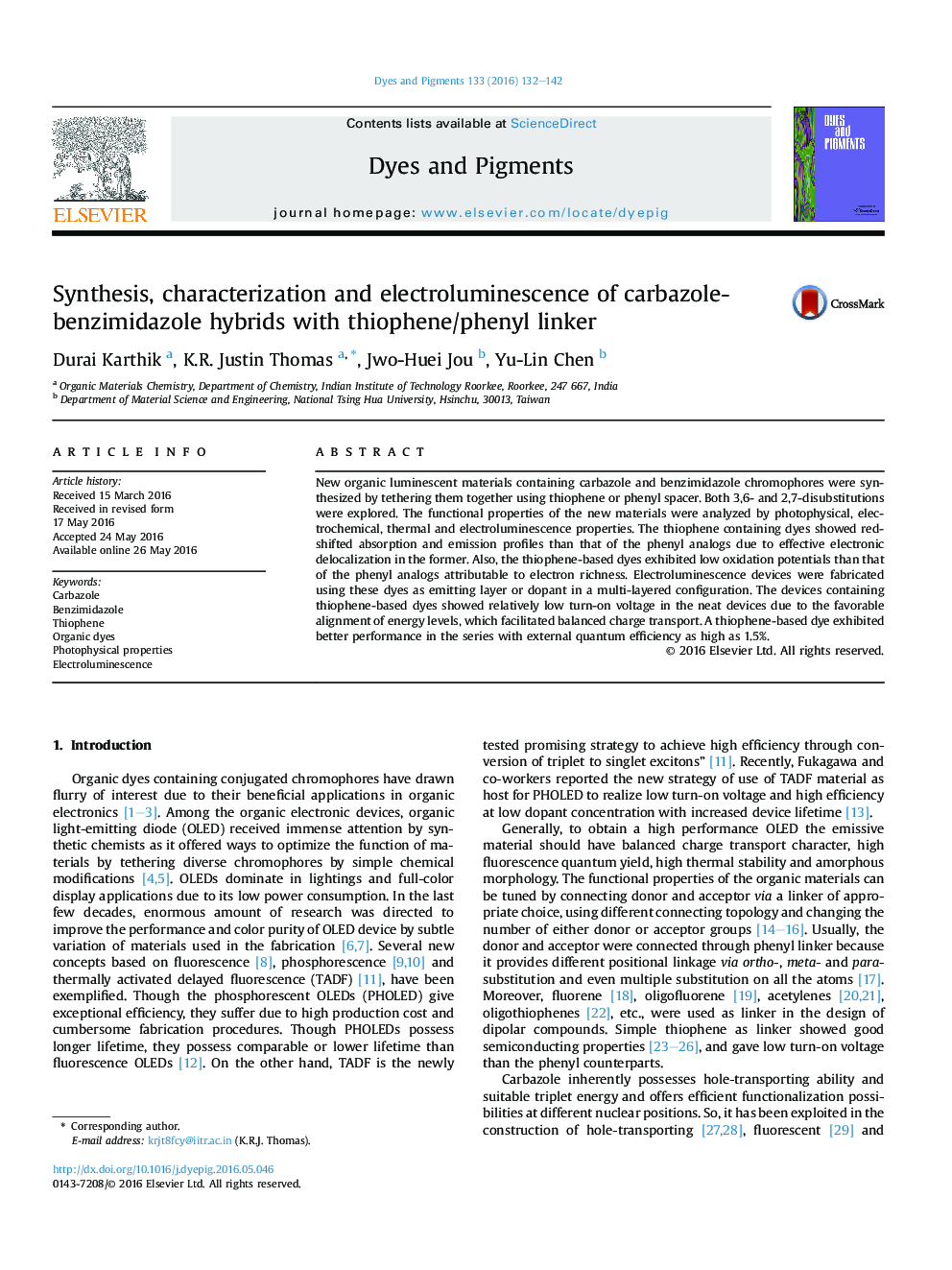| کد مقاله | کد نشریه | سال انتشار | مقاله انگلیسی | نسخه تمام متن |
|---|---|---|---|---|
| 175379 | 458909 | 2016 | 11 صفحه PDF | دانلود رایگان |
• New carbazole and benzimidazole hybrids with thiophene/phenyl linker is described.
• Oxidation potentials of the thiophene-based dyes are smaller than the phenyl counterparts.
• Favorable HOMO energy of thiophene-based dyes facilitate hole injection.
• Thiophene-based dyes show low turn-on voltage than phenyl analogs.
New organic luminescent materials containing carbazole and benzimidazole chromophores were synthesized by tethering them together using thiophene or phenyl spacer. Both 3,6- and 2,7-disubstitutions were explored. The functional properties of the new materials were analyzed by photophysical, electrochemical, thermal and electroluminescence properties. The thiophene containing dyes showed red-shifted absorption and emission profiles than that of the phenyl analogs due to effective electronic delocalization in the former. Also, the thiophene-based dyes exhibited low oxidation potentials than that of the phenyl analogs attributable to electron richness. Electroluminescence devices were fabricated using these dyes as emitting layer or dopant in a multi-layered configuration. The devices containing thiophene-based dyes showed relatively low turn-on voltage in the neat devices due to the favorable alignment of energy levels, which facilitated balanced charge transport. A thiophene-based dye exhibited better performance in the series with external quantum efficiency as high as 1.5%.
Figure optionsDownload as PowerPoint slide
Journal: Dyes and Pigments - Volume 133, October 2016, Pages 132–142
